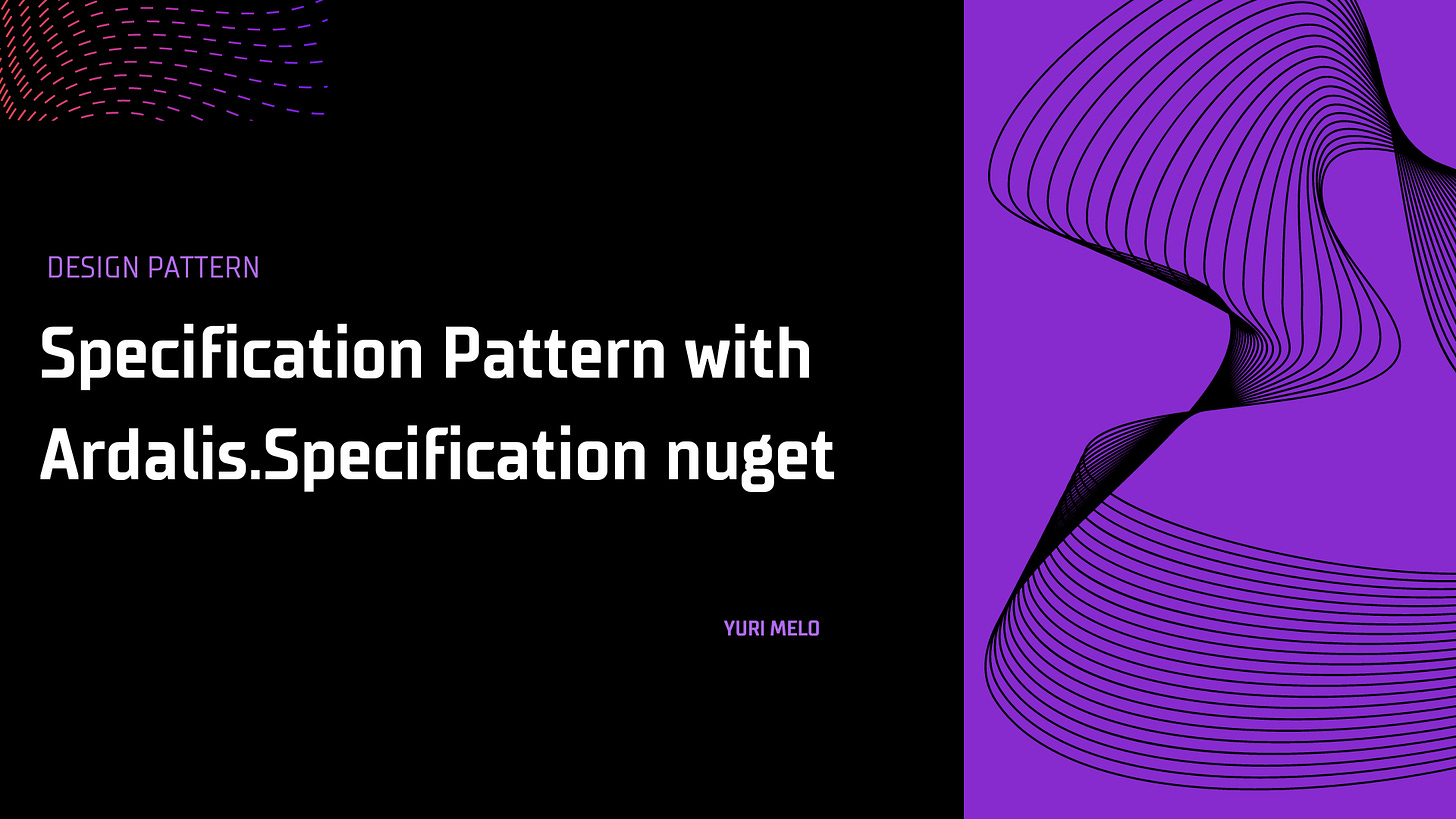Using the Ardalis.Specification NuGet Package to Implement the Specification Pattern in .NET C#
In order to improve you extensability and apply Open Closed Principle, I suggest you take a look at Specification Pattern.
Abstract
This article explores the implementation of the Specification Pattern in .NET C# using the Ardalis.Specification NuGet package. We will discuss the problems faced without using this pattern, the proposed solution, advantages, disadvantages, and practical examples of its application. Additionally, we will cover how to perform unit tests to ensure the correct functionality of the specifications. Through this article, you will understand how Ardalis.Specification can simplify and organize complex queries in Entity Framework Core.
In the future, I plan to write about how to use the Specification Pattern in a context where allow us to add new criteria over time — without modifying the existing code — and according to the client's business requirements. So how can we implement our system in a flexible way that supports change over time while still respecting the Open-Closed Principle? Using it.
Introduction
Software development often involves executing complex queries and data filtering. The Specification Pattern is a design pattern that offers a structured way to handle these queries, promoting code reuse and maintainability. This article addresses how to implement the Specification Pattern using the Ardalis.Specification NuGet package in .NET C# projects.
Problem
Developers often face difficulties when dealing with complex queries in Entity Framework Core, resulting in repetitive and hard-to-maintain code. Without a structured approach, queries tend to get mixed with business logic, making the system hard to maintain and evolve.
Implementation
Step 1: Project Setup
Create a new .NET Core project:
dotnet new webapi -n ECommerceApp cd ECommerceAppAdd the Ardalis.Specification NuGet package:
dotnet add package Ardalis.SpecificationSet up Entity Framework Core:
dotnet add package Microsoft.EntityFrameworkCore dotnet add package Microsoft.EntityFrameworkCore.SqlServer
Step 2: Domain Modeling
Step 3: Creating Specifications
Step 4: Applying Specifications in the Repository
Results
After implementing Ardalis.Specification, complex queries are significantly simplified. The reuse of specifications results in cleaner and more maintainable code. Performance tests showed that using the Specification Pattern does not introduce significant overhead, maintaining query efficiency.
Discussion
Advantages:
Clear separation between business logic and query specifications;
Code reuse with reusable specifications;
Ease of maintenance, extension and implementing Open Closed Principle.
Disadvantages:
Can introduce an additional layer of complexity for developers unfamiliar with the pattern;
Requires understanding of Ardalis.Specification and integration with Entity Framework Core.
Unit Tests
To ensure the specifications work as expected, it is important to write unit tests.
Test Setup
Add a test project to your repository:
dotnet new xunit -n ECommerceApp.Tests
cd ECommerceApp.Tests
dotnet add reference ../ECommerceApp/ECommerceApp.csproj
dotnet add package Moq
dotnet add package Microsoft.EntityFrameworkCore.InMemoryWriting Tests
Conclusion
Using Ardalis.Specification to implement the Specification Pattern in .NET C# provides a robust solution for handling complex queries in an organized and efficient manner. Including unit tests ensures the reliability of specifications, facilitating system maintenance and evolution. This pattern is highly recommended for projects requiring complex queries and long-term maintenance.
References
Evans, Eric. Domain-Driven Design: Tackling Complexity in the Heart of Software. Addison-Wesley, 2003.








